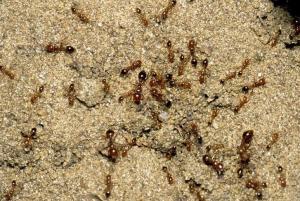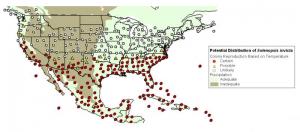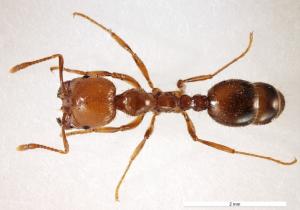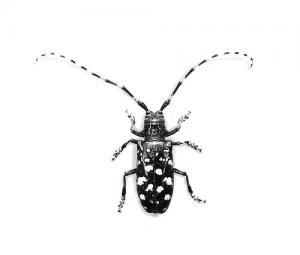Fire ants could mean big loss for Delaware businesses
Delaware officials really don't want red imported fire ants to get comfy in the First State.
Since 1998, the Delaware Department of Agriculture has been battling the pesky bugs, which could have serious economic implications if colonies become established in Delaware.
The reddish-brown ants, measuring up to a quarter inch, are known to damage corn, soybean, watermelon, cucumber and sunflower crops, mainly feeding on seeds, said Department of Agriculture spokeswoman Stacey Hofmann. They can also wreak havoc on in-ground irrigation systems, poultry operations and local beehives. They could mean high expenses for nursery, construction and mulch businesses if they have to pay for treatments and monitoring.
It’s critical for anyone who purchases tropical plant stock from nurseries to be on the lookout for fire ants, Hofmann said. “If they suspect that these small, reddish-brown stinging ants are in their plants, please report them to the Delaware Department of Agriculture so that we can take the steps to eradicate them.”
The pests are also known to cause allergic reactions, and in extreme cases people may suffer anaphylactic shock.
Hofmann said the department has received a handful of calls from concerned Delawareans asking how to identify fire ants since a May 22 press release revealed fire ants were found in a shipment of palm trees recently imported from Florida to a Sussex County business.
“Due to the sensitivity of the situation, we are not releasing the name of the business,” Hofmann said. “They have been working with us on the treatment protocol to eradicate the ants. We also do not want extra people stopping by and unknowingly transporting the red imported fire ants somewhere else in the state.”
This is not the first fire ant scare for Delaware.
In 1998, a nest was found near a home in Bear, where the colony is suspected to have survived through three winters. Four years later, in 2002, another nest was found in nursery stock in Milford.
Then, in 2005, multiple colonies were discovered in imported Florida palm trees at one site in Rehoboth Beach and two sites in Ocean City, Md. The next year, officials in Delaware and Maryland found fire ants in plant material on several different occasions and eradicated the pests. That's when the U.S. Department of Agriculture Investigative and Enforcement Services found the broker who shipped the trees was operating without a compliance agreement, resulting in fines totaling about $100,000.
There was a lull for a few years, as Delaware agriculture officials ramped up inspections. In 2012, a nest was found in a root ball on imported Queen palms and the shipment was returned.
In 2014 and 2015, two palm shipments to Rehoboth Beach were found to have fire ants. A hold and control order was issued on infected trees, requiring a liquid insecticide treatment and follow-up fire ant bait application. No fire ants were found in 2016.
It's taken a while for fire ants to spread so far. They were first imported in the United States in the 1930s, according to the USDA, and now infest more than 367 million acres in Alabama, Arkansas, California, Florida, Georgia, Louisiana, Mississippi, New Mexico, North Carolina, Oklahoma, South Carolina, Tennessee, Texas, Virginia and Puerto Rico.
But fire ants aren't the only invasive species of concern in Delaware.
In April, the department warned residents of the emerald ash borer, an invasive pest that has spread to 30 states and can destroy native ash trees. Other pests of concern include the Asian long-horned beetle, which causes serious damage to hardwood trees, and ramorum blight, a fungus-like pathogen known to cause sudden death among a variety of oak trees.
The USDA estimates invasive diseases and pests like the fire ant cause about $40 billion annually in control efforts, crop losses and damage to native ecosystems.
For more about invasive pests, go to www.aphis.usda.gov. For a list of ant species commonly found in Delaware, go to extension.udel.edu/factsheets/ants-in-the-house.





























































